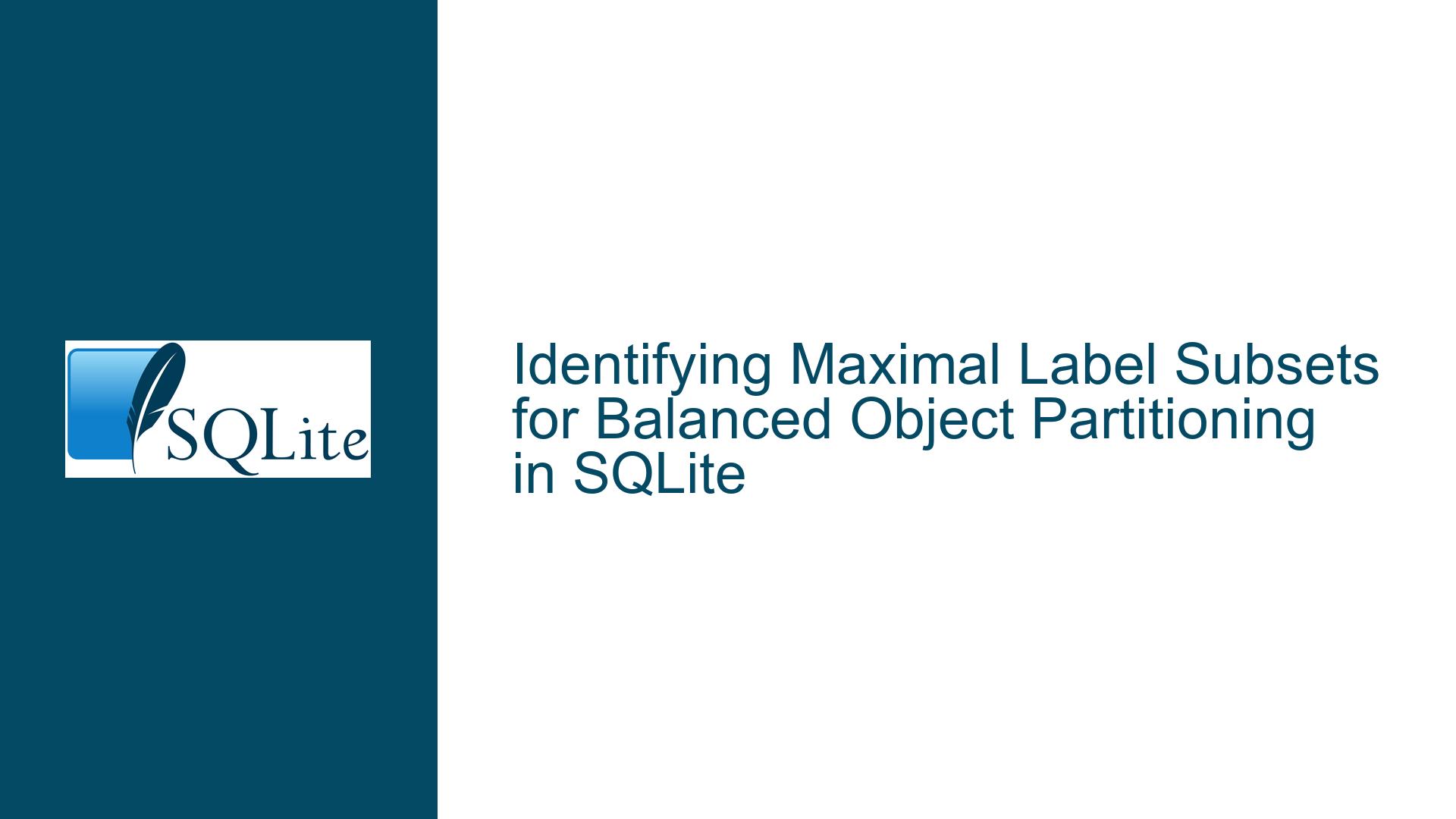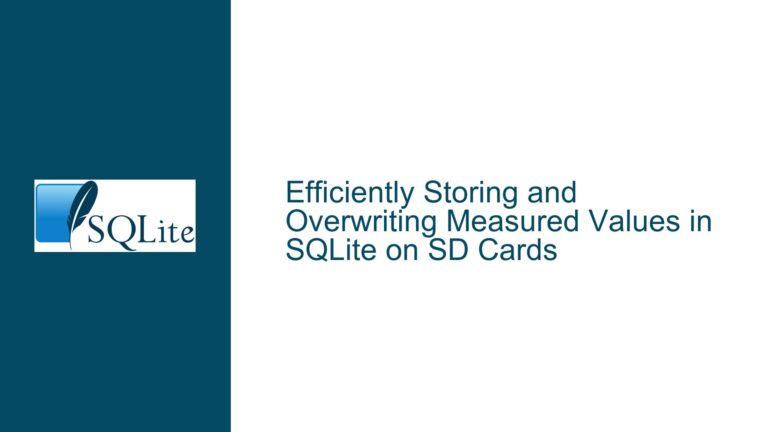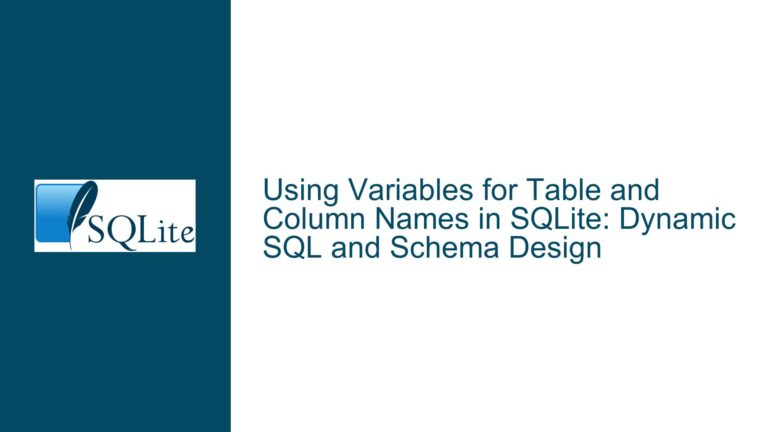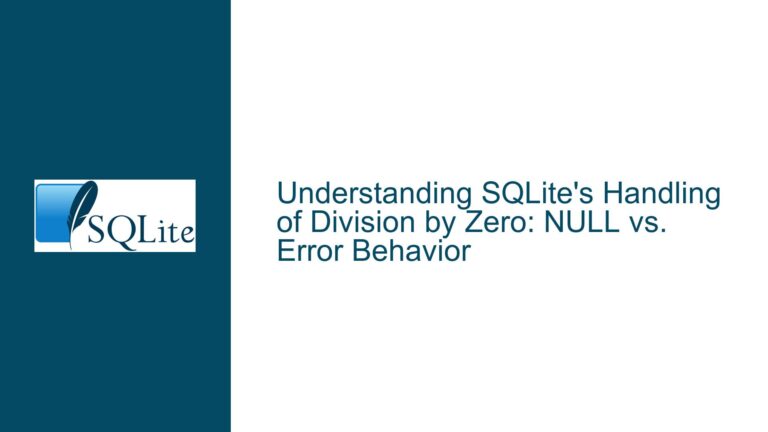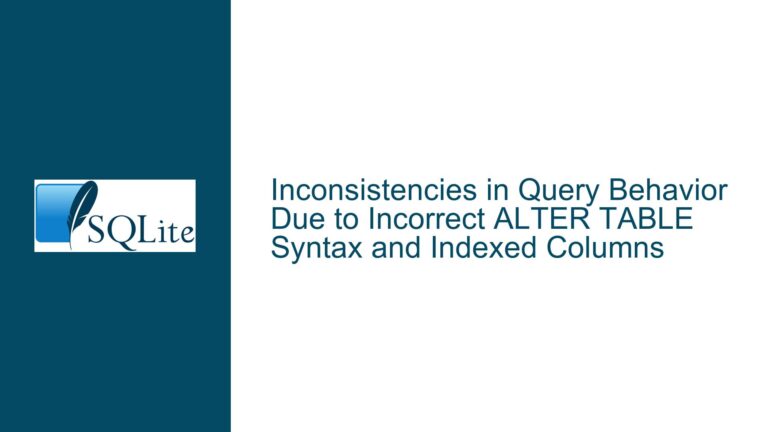Identifying Maximal Label Subsets for Balanced Object Partitioning in SQLite
Understanding Maximal Label Subsets and Their Role in Object Partitioning
Issue Overview: Label Subset Closure Conditions and Balanced Partitioning
The core challenge involves identifying maximal label subsets that define non-overlapping, non-redundant groupings of objects in a labeled dataset. These subsets must satisfy two critical closure properties:
Maximality Under Addition (Upward Closure):
No additional label can be added to the subset without reducing the number of objects that satisfy all labels in the subset.
Example: If subset{r, g}maps to objects{A}, adding labelbwould reduce the object set to∅(empty). Thus,{r, g}is maximal because adding any label invalidates the subset.Minimality Under Removal (Downward Closure):
Removing any label from the subset would increase the number of qualifying objects.
Example: If subset{g, b}maps to{M}, removingggives{b}, which maps to{M, P}. Since the object set grows,{g, b}is minimal under removal.
These subsets act as a "base" for partitioning objects into evenly sized groups. The goal is to avoid scenarios where a dominant label combination captures most objects, leaving few options for further subdivision. This problem intersects with formal concept analysis (FCA), where concepts are maximal pairs of objects and labels that mutually define each other.
Mathematical Foundations
- Let Objects =
{O₁, O₂, ..., Oₙ}and Labels ={L₁, L₂, ..., Lₘ}. - The intent (label subset)
S ⊆ Labelsdefines the extent (object subset){O ∈ Objects | O has all labels in S}. - A formal concept is a pair
(A, B)whereAis the extent,Bis the intent, and no superset ofBmaps toA.
The user’s problem requires identifying all formal concepts where the intent cannot be expanded (maximality) and cannot be contracted (minimality). This dual closure property ensures balanced partitions by preventing redundant or overly broad label combinations.
Root Causes of Complexity in Identifying Valid Label Subsets
1. Combinatorial Explosion of Label Subsets
With 1,000 labels, there are 2¹⁰⁰⁰ possible subsets—a computationally infeasible number. Even heuristic approaches struggle due to the lack of a natural ordering or hierarchy among labels. SQLite’s native set operations (e.g., INTERSECT, JOIN) are not optimized for iterative subset generation, making brute-force enumeration impractical.
2. Lack of Direct Support for Set Operations
SQLite lacks built-in functions to:
- Generate power sets (all possible subsets).
- Dynamically compare label supersets/subsets.
- Track closure properties incrementally.
Workarounds involve recursive CTEs or bitmask encoding, but these require careful optimization to avoid excessive memory usage.
3. Data Skew and Label Correlation
Labels often correlate in real-world datasets (e.g., "red" and "round" frequently co-occur). This skew leads to imbalanced extents, where certain label combinations dominate. Identifying "even" partitions requires detecting and breaking these correlations, which demands statistical analysis beyond basic SQL aggregations.
4. Algorithmic Misalignment with Relational Models
Formal concept analysis relies on lattice traversal algorithms (e.g., Chien’s algorithm), which are inherently procedural. Translating these into declarative SQL queries results in complex, nested joins that strain SQLite’s optimizer, especially with large datasets.
Troubleshooting Strategies and Solutions for SQLite Implementations
Step 1: Schema Optimization for Efficient Label-Object Queries
Tables
CREATE TABLE objects (id INTEGER PRIMARY KEY, name TEXT);
CREATE TABLE labels (id INTEGER PRIMARY KEY, name TEXT);
CREATE TABLE object_labels (
object_id INTEGER REFERENCES objects(id),
label_id INTEGER REFERENCES labels(id),
PRIMARY KEY (object_id, label_id)
);
Indexes
Composite Index on
object_labels:CREATE INDEX idx_object_labels ON object_labels(object_id, label_id);Speeds up queries fetching all labels for an object or all objects for a label.
Covering Index for Label Subsets:
CREATE INDEX idx_labels_covering ON labels(id, name);Optimizes label lookups during subset generation.
Step 2: Bitmask Encoding for Small Label Sets (≤64 Labels)
If the label count is ≤64, encode subsets as bitmask integers (each bit represents a label’s presence/absence).
Generate All Non-Empty Subsets
WITH RECURSIVE subsets(mask) AS (
SELECT 1 -- Start with the first label
UNION ALL
SELECT mask | (1 << (label_id - 1))
FROM subsets, labels
WHERE mask & (1 << (label_id - 1)) = 0
)
SELECT mask FROM subsets WHERE mask != 0;
Find Maximal Subsets via Exclusion
For each subset S, check that no superset S' ⊃ S has the same extent size:
SELECT s1.mask
FROM subsets s1
WHERE NOT EXISTS (
SELECT 1
FROM subsets s2
WHERE (s2.mask & s1.mask) = s1.mask -- s2 is a superset of s1
AND s2.mask != s1.mask
AND (
SELECT COUNT(DISTINCT object_id)
FROM object_labels
WHERE (label_id IN (SELECT id FROM labels WHERE (1 << (id - 1)) & s2.mask))
GROUP BY label_id
HAVING COUNT(*) = (
SELECT COUNT(DISTINCT object_id)
FROM object_labels
WHERE (label_id IN (SELECT id FROM labels WHERE (1 << (id - 1)) & s1.mask))
)
)
);
Step 3: Hybrid Approach for Large Label Sets (>64 Labels)
For large datasets, combine SQLite preprocessing with application-side logic:
Phase 1: Precompute Label Frequencies and Correlations
-- Label frequency
SELECT label_id, COUNT(*) AS freq
FROM object_labels
GROUP BY label_id;
-- Label correlations
SELECT l1.label_id AS label1, l2.label_id AS label2, COUNT(*) AS cooccur
FROM object_labels l1
JOIN object_labels l2 ON l1.object_id = l2.object_id AND l1.label_id < l2.label_id
GROUP BY l1.label_id, l2.label_id;
Use these statistics to prioritize labels with moderate frequency and low correlation, as they are more likely to contribute to balanced partitions.
Phase 2: Iterative Subset Expansion with Pruning
- Seed Subsets: Start with single labels having frequencies within a target range (e.g., 10–20% of total objects).
- Expand Subsets: Add labels that reduce the extent size without dropping below a minimum threshold (e.g., ≥100 objects).
- Prune Redundant Subsets: Remove subsets that are subsumed by larger subsets with the same extent size.
-- Example: Find labels that reduce the extent of subset {r, g}
SELECT l.label_id
FROM object_labels ol
JOIN labels l ON ol.label_id = l.id
WHERE ol.object_id IN (
SELECT object_id
FROM object_labels
WHERE label_id IN (SELECT id FROM labels WHERE name IN ('r', 'g'))
GROUP BY object_id
HAVING COUNT(DISTINCT label_id) = 2 -- Objects with both 'r' and 'g'
)
GROUP BY l.label_id
HAVING COUNT(*) < (
SELECT COUNT(*)
FROM (
SELECT object_id
FROM object_labels
WHERE label_id IN (SELECT id FROM labels WHERE name IN ('r', 'g'))
GROUP BY object_id
HAVING COUNT(DISTINCT label_id) = 2
)
);
Step 4: Leverage Materialized Views for Performance
Materialize intermediate results to avoid recomputing expensive joins:
CREATE TEMPORARY TABLE label_extents AS
SELECT label_id, GROUP_CONCAT(object_id) AS objects
FROM object_labels
GROUP BY label_id;
CREATE TEMPORARY TABLE subset_extents AS
SELECT s.mask, GROUP_CONCAT(ol.object_id) AS objects
FROM subsets s
JOIN labels l ON (s.mask & (1 << (l.id - 1))) != 0
JOIN object_labels ol ON l.id = ol.label_id
GROUP BY s.mask
HAVING COUNT(DISTINCT ol.object_id) = (
SELECT COUNT(DISTINCT object_id)
FROM object_labels
WHERE label_id IN (SELECT id FROM labels WHERE (1 << (id - 1)) & s.mask)
);
Step 5: Algorithmic Optimizations Inspired by Formal Concept Analysis
- Bottom-Up Traversal: Start with single labels and merge subsets incrementally, checking for closure properties.
- Top-Down Pruning: Begin with the full label set and remove labels while monitoring extent size.
Bottom-Up Example
WITH RECURSIVE concepts(mask, size) AS (
SELECT 1 << (id - 1), COUNT(*)
FROM labels
JOIN object_labels ON labels.id = object_labels.label_id
GROUP BY labels.id
UNION
SELECT c.mask | (1 << (l.id - 1)), COUNT(DISTINCT ol.object_id)
FROM concepts c
JOIN labels l ON c.mask & (1 << (l.id - 1)) = 0
JOIN object_labels ol ON l.id = ol.label_id
WHERE ol.object_id IN (
SELECT object_id
FROM object_labels
WHERE label_id IN (SELECT id FROM labels WHERE (1 << (id - 1)) & c.mask)
GROUP BY object_id
HAVING COUNT(DISTINCT label_id) = BIT_COUNT(c.mask)
)
GROUP BY c.mask | (1 << (l.id - 1))
)
SELECT mask FROM concepts
WHERE NOT EXISTS (
SELECT 1
FROM concepts c2
WHERE c2.mask & mask = mask
AND c2.size = size
AND c2.mask != mask
);
Final Note: While SQLite can handle the foundational queries, large-scale implementations may require offloading combinatorial logic to an external application. Use SQLite for efficient data retrieval and preprocessing, and apply algorithms like Chien’s method or NextClosure in a procedural language (Python, Java) to manage subset generation and closure checks.
